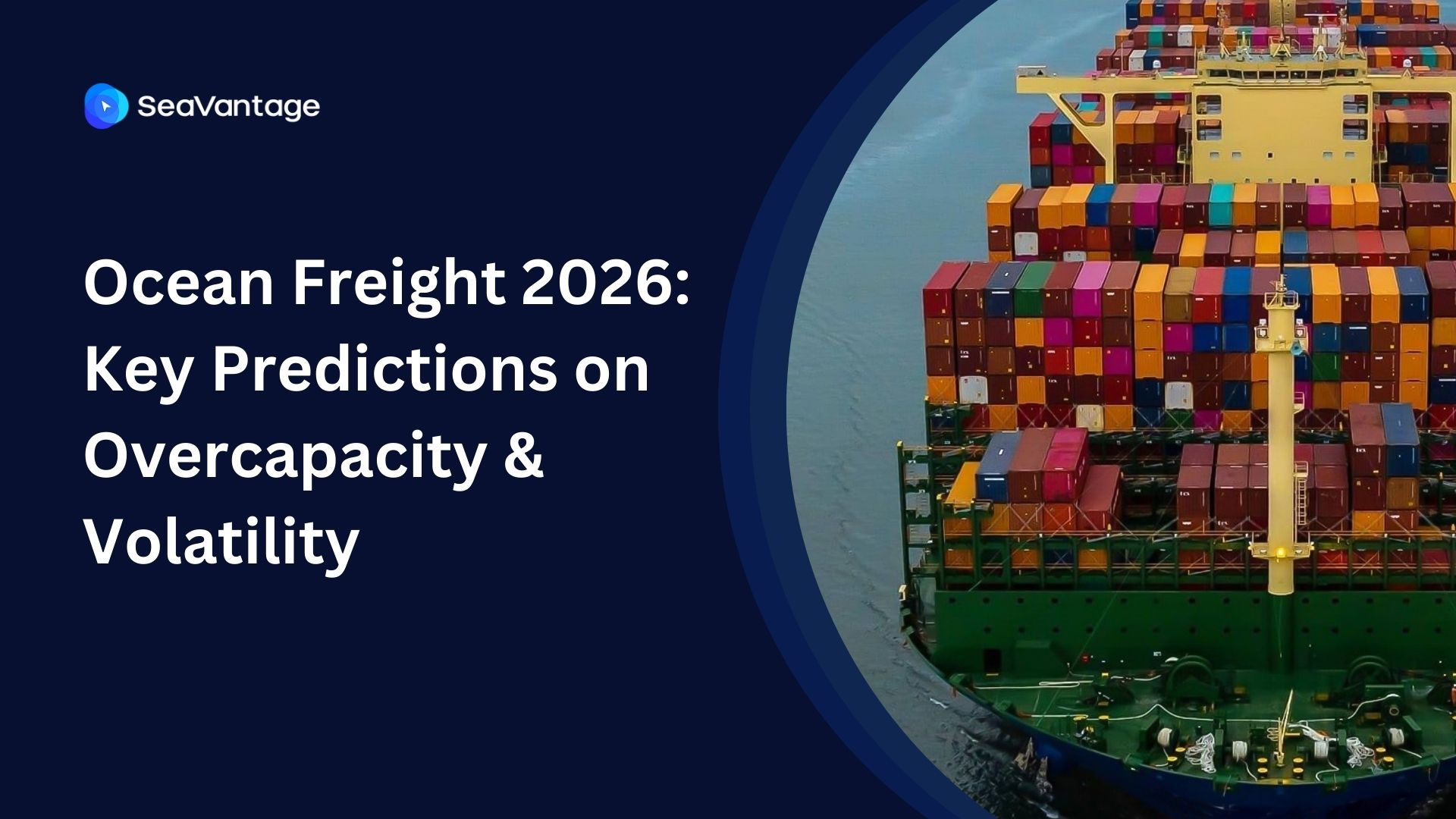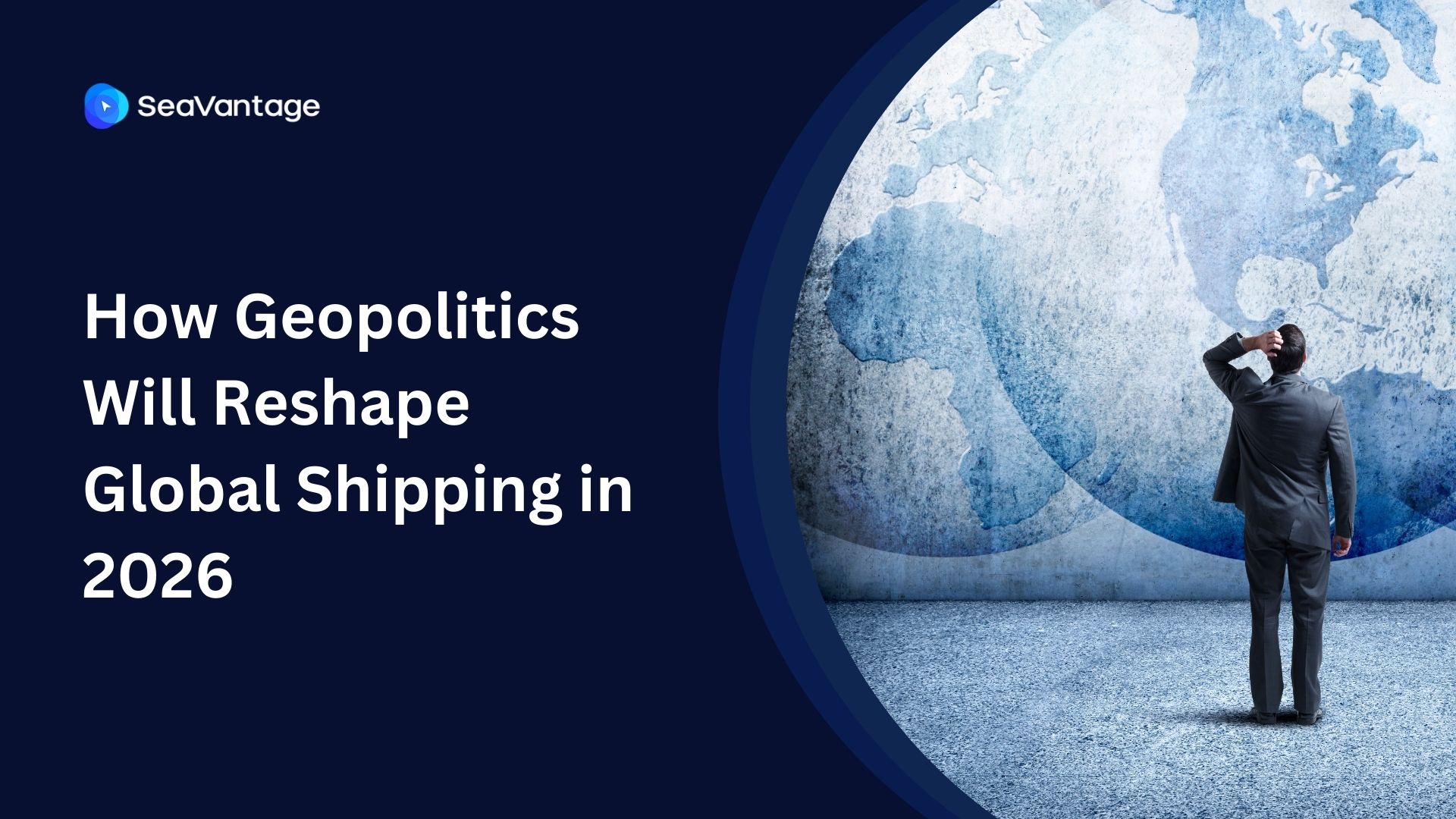2026 Ocean Shipping Outlook: Overcapacity, Chaos & Opportunities

The Search for a New Normal
After years of unprecedented supply chain disruption, from the pandemic-era gridlock to the ongoing Red Sea crisis, the logistics industry is collectively searching for stability. Shippers, carriers, and consumers alike are hoping for a return to predictability. However, the forces shaping global trade are not pointing toward a simple return to the past, but toward a new era defined by the paradox of structural overcapacity and acute operational volatility.
Looking ahead to 2026, the market will be defined by a set of powerful and often contradictory dynamics. A massive influx of new vessel capacity suggests a market downturn, yet this same "overcapacity" has previously provided a crucial buffer against global shocks. A potential reopening of the Suez Canal promises shorter transit times but threatens to unleash logistical chaos. This article distills key predictions from industry experts to provide a clear roadmap for navigating the turbulent waters of the year ahead.
A Flood of New Ships Will Create a Cyclical Downturn
The fundamental outlook for 2026 is shaped by a massive influx of new vessels. New ship deliveries are projected to increase the global fleet capacity by 5%, an injection of supply that, under normal circumstances, points directly toward a normal cyclical downturn.
However, this picture is complicated by a central tension in the market: fleet age. While approximately 13% of the world's container vessels are over 20 years old and prime candidates for scrapping, removing them from service isn't straightforward. As carriers take delivery of new, ultra-large vessels, they need a robust network of smaller, older ships to operate as feeders. It is likely not feasible to scrap the entire aging fleet, as these vessels are critical to the hub-and-spoke model, thus limiting a key lever for balancing capacity.
This situation highlights a core paradox of the shipping industry. What is labeled "overcapacity" in a calm market can quickly become essential "resilience" in a crisis, a lesson learned vividly during the Red Sea diversions.
"let's look at fourth quarter 2023 that's not that long ago carriers were losing money fourth quarter because of over capacity... red sea crisis rolls around and suddenly what were they were laughed at for over capacity that was the necessary capacity we needed to divert around Africa... So I'm kind of questioning what what is the lesson we should actually learn in this industry should we learn only to order what we think we're going to need and therefore not be resilient but of course I also realize when you don't need that resilience yes then it's called over capacity and then it becomes lossmaking that's the nature of the industry"
The Suez Canal Reopening: A Paradox of Relief and Disruption
While a resolution to the conflict impacting the Red Sea and a subsequent reopening of the Suez Canal would be a positive development for global trade, its immediate aftermath would trigger a period of intense, widespread disruption.
The most immediate effect would be a sudden surge of vessel arrivals at European ports. With ships no longer taking the longer route around Africa, twice as many vessels could arrive in the same week, overwhelming port terminals. This requires twice as many trucks, rails, and barges to move cargo inland, while importers face the challenge of being able to physically take delivery of twice the amount of cargo.
This is not just a European problem; it's a global one. The ripple effects would be felt across major trade lanes, impacting services on the US East Coast. Furthermore, the concentration of vessels and containers in Europe would lead to significant equipment shortages in Asia. A potent compounding crisis could emerge if a US inventory restocking boom occurs at the same time, which could trigger a massive spike in rates to levels seen during the initial Red Sea crisis.
"if you're sitting there and say well I'm not shipping anything from Asia to Europe this doesn't affect me think again"
The Great Sourcing Shift Is Accelerating
The ongoing US-China trade war is acting as a powerful accelerant to the long-term trend of manufacturing and sourcing diversification—often called "China + Many." The extreme volatility of tariffs, in particular, has amplified this movement by creating profound uncertainty for importers.
The data paints a clear picture of this transformation:
• China: Share of US imports has fallen below 40% for the first time, down from over 50% a decade ago.
• Vietnam: Exports to the United States have now narrowly surpassed those of the entire European Union combined.
• Thailand: Share of US imports has more than doubled in less than ten years, growing from 2% to 4.2%.
• Cambodia: Share has grown more than five-fold, expanding from 0.2% to 1.1% in the same period.
For shippers, this constant state of flux makes long-term planning incredibly difficult. The unpredictable nature of tariffs forces businesses into a reactive posture, creating hesitation and disrupting inventory planning.
"for the importers you are basically flying blind if I buy goods say in India and I ship tariffs could change while my cargo is on sea i have no visibility on what my landing cost is going to be which then leads to this massive hesitation on the importers not really to import anything unless absolutely necessary"
Volatility Is the Only Certainty
This looming structural overcapacity, combined with the potential for a massive network shock from a Suez reopening and the ongoing realignment of global sourcing, creates a perfect storm for persistent market volatility. The days of stable pricing and predictable service are unlikely to return in 2026. Ocean carriers have become highly adept at managing effective supply through tools like blank sailings and slow steaming, allowing them to react quickly to changes in demand.
This dynamic has fundamentally changed the nature of rate adjustments. In the past, a General Rate Increase (GRI) of a few hundred dollars was the norm. Today, the market has proven it can absorb much greater shocks, and GRIs in the thousands of dollars, such as "$2,000 or $3,000," have become common in response to sudden market shifts. For shippers, success in 2026 will be defined by their ability to withstand these sharp and frequent fluctuations.
"i don't think that level of volatility is going to go away and shippers need to sit down and think through how do I navigate my business best possible if this level of volatility is going to continue because that's actually quite likely coming into 2026"
Navigating the Waters: Key Strategies for 2026
While the market in 2026 is set to be complex and volatile, proactive strategies focused on flexibility and diversification can build the resilience needed to succeed.
• Plan for the Unexpected Have contingency plans in place for your most important flows, especially for a potential Suez Canal reopening. This includes identifying alternative routings, gateways, and sourcing options that can be activated quickly.
• Diversify Your Partners Work with a mix of carriers AND alliances. This mitigates the operational impact of blank sailings and other service disruptions, as different carriers and alliances have varying network strengths and port calls.
• Rethink Your Rate Strategy Diversify your freight procurement across fixed, floating, and index-based contracts to match your business's seasonality and risk tolerance. For added stability, consider new financial hedging instruments like freight futures to manage volatility and stabilize budgets.
• Focus on Total Landed Cost Don't be lured by a low base freight rate. Ensure that an attractive ocean price isn't being eroded by high inland fees, hidden surcharges, or poor service quality that leads to costly delays and disruptions.
• Leverage Technology Use modern visibility tools to monitor your cargo in real-time. This data allows you to decrease operating costs, increase efficiency, and proactively mitigate the impact of service disruptions as they happen.
Conclusion: Built for Resilience?
The converging forces of a vessel surplus, unpredictable geopolitical shocks, and rapid sourcing realignments will challenge supply chains to move beyond simple cost optimization. The year 2026 will not be a return to normal; it will be a test of strategy, agility, and foresight. As these powerful dynamics reshape global trade, the critical question for every business is: is your supply chain built merely for efficiency, or is it truly built for resilience?
2025년 9월, 주요 글로벌 항만에서 어떤 운송사가 가장 긴 선박 체류 시간을 기록했는지 확인해보세요. 트렌드를 비교하고, 지연을 파악하며, 전체 항만 데이터를 통해 운송 전략을 최적화할 수 있습니다.
2025년 8월, 주요 글로벌 항만에서 어떤 운송사가 가장 긴 선박 체류 시간을 기록했는지 확인해보세요. 트렌드를 비교하고, 지연을 파악하며, 전체 항만 데이터를 통해 운송 전략을 최적화할 수 있습니다.
2025년 7월, 주요 글로벌 항만에서 어떤 운송사가 가장 긴 선박 체류 시간을 기록했는지 확인해보세요. 트렌드를 비교하고, 지연을 파악하며, 전체 항만 데이터를 통해 운송 전략을 최적화할 수 있습니다.
Discover the top ocean freight predictions for 2026, from ship overcapacity to Suez Canal disruption, global sourcing shifts, and strategies for volatility.
Discover why container tracking breaks under complexity. Learn how B/L-based visibility improves ETA accuracy, boosts productivity, cuts TCO, and reduces data loss.
Discover how geopolitical tensions, tariff volatility, sourcing shifts, and the Suez Canal reopening are reshaping global shipping costs and logistics into 2026.



.svg)






.png)